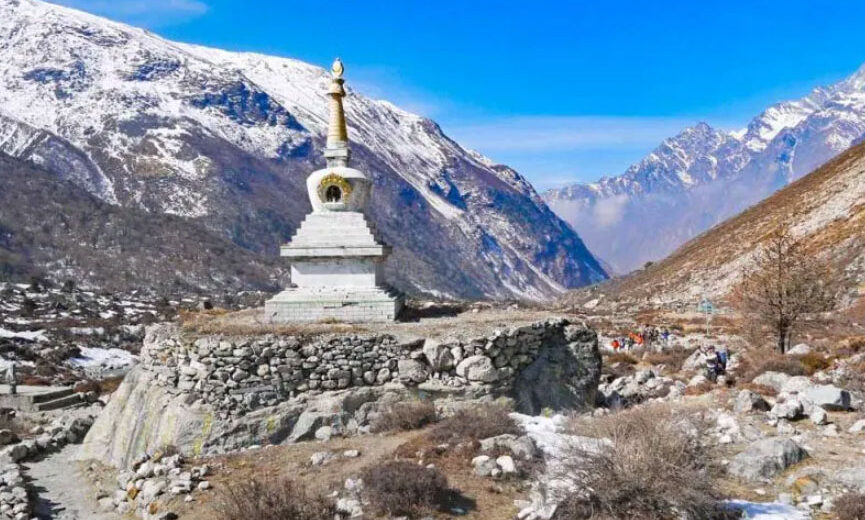
The Langtang trek is one of the shortest treks in Nepal that rewards hikers with a variety of habitats: dense tropical forests with bananas, monkeys and other warm-climate flora and fauna at the lower ranges and glaciers and snow-capped mountains at the higher elevations. It is a relatively short trek however it is quite challenging right from the start and there are a number of ascends which are long and steep characteristic of trekking in Nepal.
This trek can be done independently, can be linked with Tamang Heritage trek or can be used for the warm up trek for the longer and more demanding treks such as Everest Base Camp trek or Annapurna Circuit Trek.
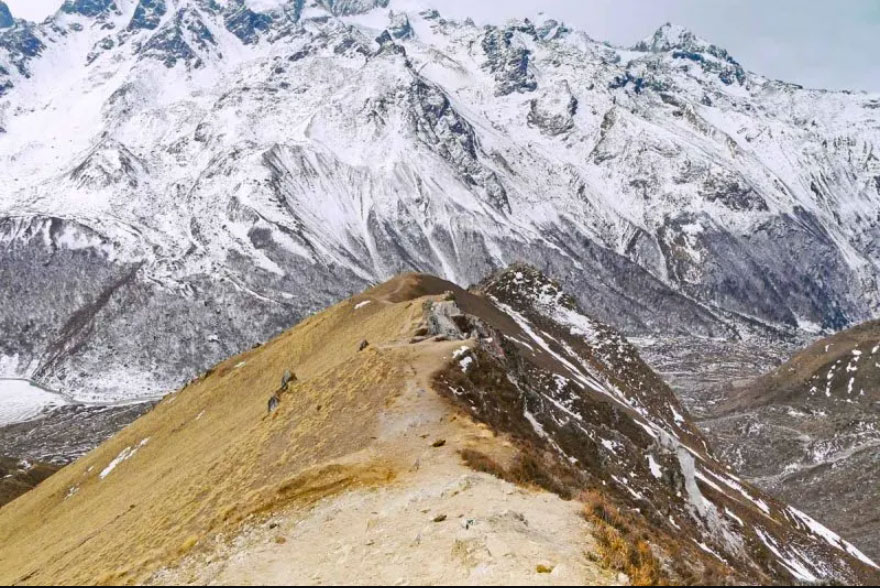
An update for the Langtang Trek
Every trekker, starting from April 1, 2023 must have a licensed guide to trek majority of the areas in Nepal including the Langtang trek. This rule was implemented in March 2023, and there is still an uncertainty regarding what is meant for the Langtang trek. Some Internet sources suggest that it is obligatory.
It also seems the new regulation was passed but the implementation is not full proof on all the trekking trails in Nepal. Some of the regional governments have decided not to enforce it making treks such as the Everest Base Camp trek to be done without a guide.
Langtang Trek Overview
- Days required: 5-7 days, plus 2 days for travel to and from the trek
- Accommodation: Guest houses
- Permits required: TIMS card and Park entrance permit
- Highest point: 3,800 m / 12,467 ft on the Langtang trek; 4,600 m / 15,000 ft if climbing Kyanjin Ri peak
- Distance: 77 km / 48 mi (including Kyanjin Ri peak)
- Guide: Compulsory
- Cost per day: US$23 per person, including permits and transportation
- Total ascent: 3,925 m / 12,877 ft
- Total descent: 3,925 m / 12,877 ft (same route up and down)
- Difficulty: Moderate to difficult
How Long is the Langtang Trek?
Stretching to 77 km (48 mi), the Langtang trek along with Kyanjin Ri Trek usually takes 5-7 days. It is also possible to do the extra day treks from the main route for instance via Tserko Ri Peak from Kyanjin Gompa which takes about 8 km.
It is also possible to trek in Langtang and also in the Tamang Heritage trail which will require 3 more days. The Tamang Heritage trek is very colorful as it provides a cultural exposure.
How difficulty is the Langtang Trek?
The trek is quite strenuous because of the rise and fall with the first two days involving and upward gain of more than 2000 meters and several long steep up and down ridges on the trek. Nevertheless, this is one of the less challenging trekking in Nepal and ideally suited for those who have never done high altitude trekking. You can found the Langtang trek to be easier mainly because its maximum elevation point is comparatively lower to other similar treks such as the Annapurna Base Camp Trek or Mardi Himal Treks, we even go up to 4600m if we are going for Kyanjin Ri peak trek.
Travel Insurance for The Trek
The Langtang trek is a high altitude trekking that passes through most of the areas in Nepal that are hard to reach. In the application of the TIMS card hiking permit there is a technical requisite that one must be insured! But nobody ever asked for it. Once a person gets injured or falls sick in such remote areas, let alone at high altitudes, evacuating him or her presents some real challenges and may not be cheap. One would recommend getting travel insurance quote.
World Nomads travel insurance is developed by travelers for travelers, and protects you for more than 150 adventure activities, medical emergencies, lost baggage, trip cancellations and much more.
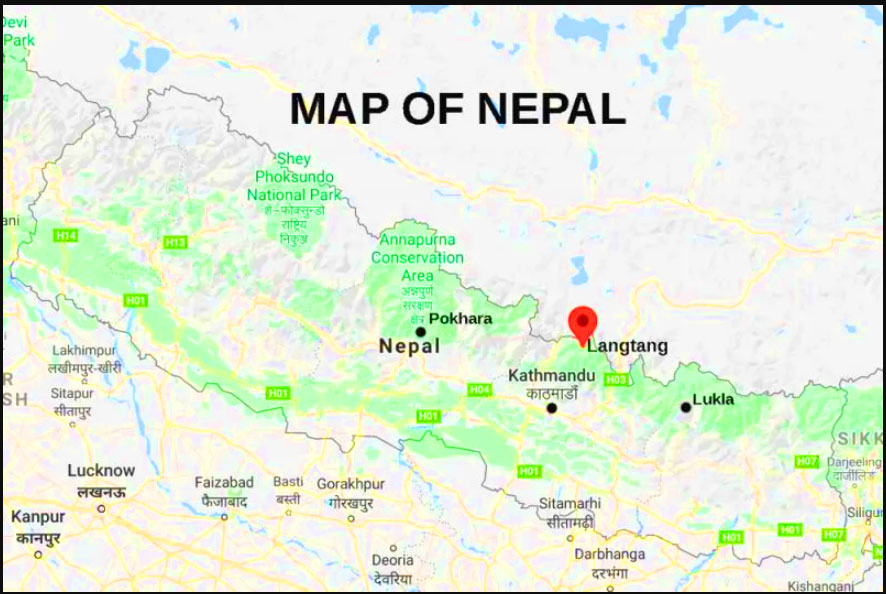
Where does the Langtang trek start?
Langtang trek is an up and down route where the start and end point is Syabrubesi; this is a small village which is 120 km from Kathmandu towards the northern part near the border of China.
Do I Need a Guide for the Trek?
That is quite difficult to answer definitively. Actually, all the foreigners are need the porters while Trekking in Nepal. Nevertheless, some of the hikers interviewed, together with the locals in August of 2023 pointed out that the new rule has not been implemented yet and therefore one can do the Langtang trek without a guide.
If you want to go for the independent trek then you have an option to go to Syabrubesi and if the independent trekking is not allowed then you try to look for the guide there.
The other option that may be considered is small group joining rather than getting a personal guide. Joining a group tour has several benefits:
- You do not have to bother with permits, transport, lodging, and other matters; these are all taken care of.
- There’s no need to plan your route.
- In my opinion, you will have a chance to get to know real people since majority of them might not speak English very well.
- You can gain more insight on the geographical area, people’s culture, their way of life and many others.
- Also if you are looking forward for a solo trip, then it is an excellent way to be able to make new friends on the way and have the trek in a group as well.
How much does the Langtang trek cost?
The overall cost to trek the Langtang trekking route ranges between US$ 50 dollars per head per day and this includes, permit, transportation, lodge, and food.
Permits: The Langtang trek requires not only TIMS card but also Park entrance permit as well. The TIMS card and the Park entrance permit cost NPR 2000 (US$15) and NPR 3000 (US$23) respectively and thus making it NPR 5000 (US$38) for every individual.
Guide: Incase you contract a guide, you will be required to add to your budget spending an extra 25 dollars per the day hired. This cost, one can split amongst people, let’s use the example where you are with a group of four then it would be about seven dollars per person per day.
Transport: The transport costs from Kathmandu to Syabrubesi per bus is NPR 800 (US$6) for one way trip and NPR 1600 (US$12) for round trip. A jeep will be more expensive. Furthermore, passengers are charged NPR 500 (US$ 4) to travel by a taxi to reach New Bus Station in Kathmandu and hence, the total transport cost per passenger comes to NPR 2,100 (US$ 16).
Accommodation: Accommodation during the Langtang trek is relatively cheap if you take your meals at your guesthouse on the trek. In the trekking season a double room will cost around NPR 500 (US$4) and if alone, then one normally pays half of this.
Food: The expenditures for food are the most significant. This is because with elevated altitude the costs of transportation of goods tends to rise as a result of challenges in transportation. Foods mostly go for 500 – 700 NPR which may include pasta, Dal Bhat, eggs, fried rice, soup, oatmeal, momos and pizza. Different avails of tea and coffee range from NPR 100 to NPR 200 (US$ 0. 70 to 1. 50) and Snacks including chocolate and chips cost NPR 250 (US$2/-.)
Money Saving Tips during Langtang Trek
To save money and bring less plastic bottles, consider carrying a LifeStraw bottle or any other water purification equipment with you. On the trail there are many points you can get free water from rivers or streams that are crossing the trail.
In this regard, one might consider taking tea bags or coffee with him or her. A cup of hot water costs far cheaper than a cup of tea or coffee, for instance, it is cheaper to make your own than buying a pot.
Food items such as nuts, cookies, chocolates, and dried fruits can be bought from Kathmandu and it is cheaper as compared to buying on the trip.
Generally Dal Bhat is recommended for those who have very huge appetite. This is staple food which means this dish should come with accompaniments of rice and dhals that are fried because one can ask for more servings of it without charge. This is ideal if you are the once a day eater or just the twice a day kind of person.
Permits for the Langtang Trek
For the Langtang trek you will require both TIMS and national park fees. For all these it cost, US $ 38 or NPR 5,000 per person.
It is also possible to get TIMS card at the Tourist Board Office which is situated at Pradarshani Marg, Bhrikutimandap, Kathmandu. Working days are from Monday to Friday and Sunday while the office is closed on Saturday The office is open from 10:00 AM to 5:00 PM.
To get a TIMS card, you’ll need:
- Your passport
- An accomplished form is produced at the office.
- Two passport-size photographs which must be in color or black and white although if the applicant does not have photographs, they will accept a photologically copy taken from the passports; however, it is preferred that the applicants also bring in their photos.
- NPR 2,000 (US$15) in cash (there is an ATM outside the office for cash withdrawal)
This can take as long as 15 minutes to an hour based on the number of applicants that are being interviewed.
If you don’t have much time, you can also get the TIMS card at the first check point leading to Syabrubesi and it costs NPR 2000 that is approx US$ 15. We got ours in Kathmandu but we did verify at the checkpoint that one can get this option. Please realize that if you are using public transportation which is the local bus, then the bus will have to halt until you get the card. We should note that there are no means available for photo or copying at the checkpoint so please bring your photos with you.
This special permit to enter the National Park can be obtained twenty kilometers from Syabrubesi at the second check point before getting to this town.
To get the park permit, you’ll need:
- Your TIMS card
- Your passport
- Three thousand NPR in cash for all the Interviewees (interview will be conducted in local Nepali language so accordingly I have provided local currency only).
As a word of advice when you reach this checkpoint you will be provided with a permit and your luggage will also be searched. If you have a drone of any sort, make sure you carry it on your hand luggage as they do not take small backpacks. However, the use of a drone in Nepal needs a specific permission from the authorities thus as required by the law.
TIMS cards and permits are controlled three times while approaching Syabrubesi, three times while on the way back to Kathmandu and only once during the Langtang Trek. They include buses and round vehicles popularly known as jeeps that shuttle tourists, and these have to halt at all check points where travelers alight and proceed into the check point office to have their names recorded and their TIMS cards validated. This is a rather short process and it takes only several minutes
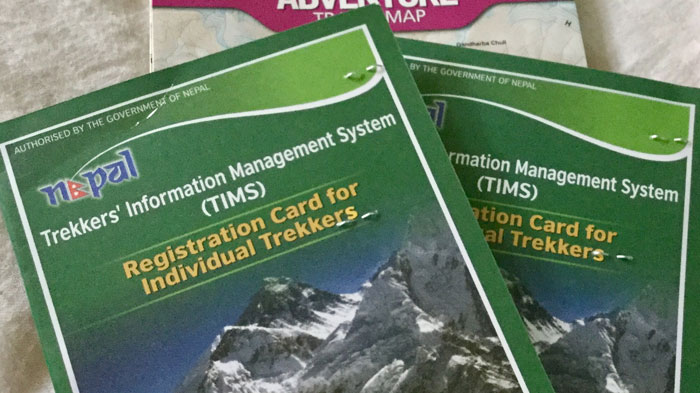
How to get to the Langtang trek?
There are no any airport facilities in the region thus fs accessing Syabrubesi is only through road transport. The road surfaces are generally bad and there are both asphalted and graveled road parts; road construction is still in progress. Buses therefore move very slow and after some distance they slow down to pick people who are alighting or boarding the bus.
A one way trip costs NPR 800 (US$6) per person, and you’ll be on the bus for a duration of 7-9 hours. Micro buses for Machha Pokhari are available every day between 6am and 8am from the New Bus Station which is marked on Google maps as Machha Pokhari microbus stop. The best advice, which can be given to someone who is unfamiliar with the area is to simply state to the driver of a taxi where you need to be and the driver will take you there.
Buses abide by the fatigue-driving laws so they do at least two longer stops for toilet breaks and food, you can also buy water here. At times they put on local music for many hours and as such one may be better off with earphones or earplugs.
For instance, a taxi fare from Thamel, which is the most popular tourists’ hub, to the New Bus Station ranges from NPR 500 (about US$4).
There is another way to go by jeep from Kathmandu to Syabrubesi which is faster and comparatively more comfortable but it is costly. It was US$100 per person at our hotel, however, you might get a place cheaper if you do some search in Thamel. It is, nevertheless, relatively more expensive if you are alone; though if you are in a group you could share the jeep it would be cheaper.
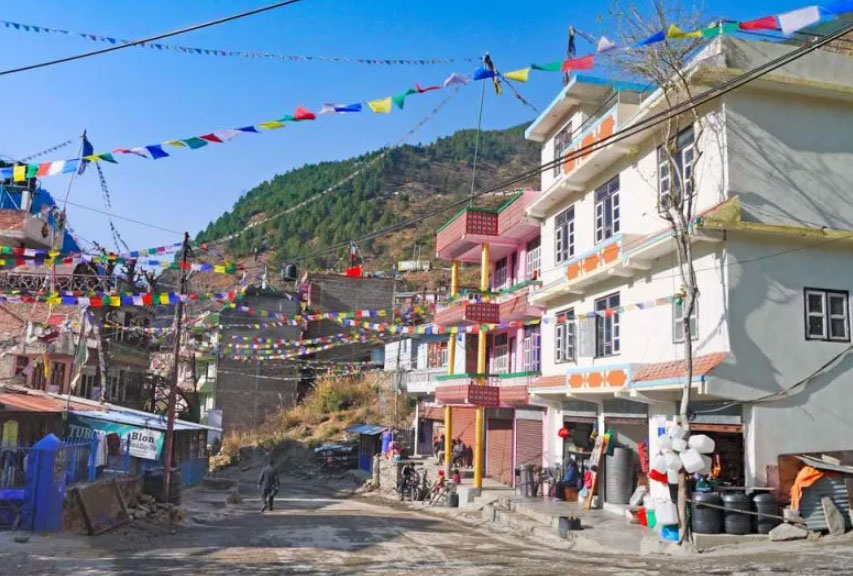
Places to stay in Kathmandu
Thamel is the most vibrant part of the city which has most of the hotels, restaurants, travel companies, shops and other similar services. Thamel is very big area and large area, therefore one needs to select right place in Thamel for hotel.
This is a densely populated with many hotels; you can book hotel of your choice in the cheap, economical, luxury and the costly classes. In every aspect of the hotels you can naturally meet the staff, being very friendly and willing to help. In that way you can leave your extra luggage at the hotel for free as you go for hiking or trekking.
When is the best time for trekking?
As such the best time to undertake the Langtang trek is in the months of March-April and October- November with April and October considered to be the peak period. Some of the months associated with this season include June, July, August and it is greatly discouraged for one to trek the park during this season because of rain. At this time of the year while the trails and roads are very slippery many of the guest houses are closed down for the winter, while leeches exist at low altitudes.
December, January and February are the driest as well as the coldest months in the whole year. Nevertheless, people may still find some snow in January especially at the higher areas of the country. The winter season is usually characterized by cold weather and most of the guest house operations reduce their operations because of low clientele during this time.
The best month to trek in Nepal is March, March is the ideal time for hiking because:
- It is at the end of the dry season, there is little precipitation and more of blue skies recorded.
- The roads and trails are not muddy.
- Due to business reasons, many guesthouses are operational after the winter season.
- Tourism is not so developed; there are not many foreign visitors in general.
- The temperatures are ideal for hiking: it’s neither too hot, nor too cold.
What is the accommodation like on the trek?
Langtang is a tea house trek there is no camps and instead trekkers stay in guest houses which are found through out the trekking area. The amenities provided can vary, but most guest houses offer the following:
- Two-bedroomed accommodation – bed and breakfast – where the ‘bed’ is a room with two single beds in the room.
- A dining room furnished with cooking utensils stove and tables.
- Indoor toilets: While some of the rooms have en-suite facilities the others have bathrooms shared between several rooms or the entire floor. WC can be either European or American with a seat or Asian with no seat.
- Lighting — most structures that accommodation facilities are built on have electrical connections and this makes it easier since some of the guest houses have power outlets in the rooms or in the dining area. There was no additional charges for using the charging devices.
- Hot showers —these are usually from the sun therefore if there is cloud cover there will be no hot water. Sometimes there is a bucket shower where you can wash using hot water for 200 NPR (an equivalent of 1.5USD) – one bucket is sufficient for two persons.
- Blankets —there are thick blankets in every guest house, but you can also bring your own sleeping bags.
- WIFI: this is usually charged separately…but many will offer it for free especially for longer stays. Some guest houses have a set fee that will allow multiple accesses while others offer data cards for 200 MB for NPR 500 / US $ 4 and 1 GB for NPR 1000 / US $ 8.
Be ready that there can be no electricity, hot water or Wi-Fi even if a guest house says that all these amenities are provided. Some of the challenges can be When there is light Surge in the village, Solar showers cannot heat up due to cloudy weather, shortage of internet cards, frozen pipes, insufficient supply of running water. One should enquire about the services before entering and registering as guests sometimes some amenities may not be working.
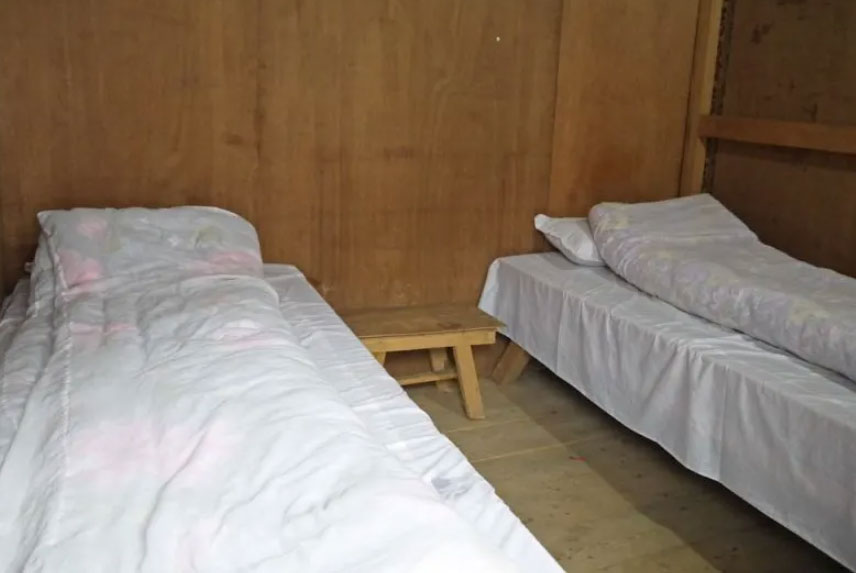
What is the food like on the trek?
As with food in all guest houses on the trek, the food is not very different from what is served on other treks in Nepal. Some of the common breakfast meals are the oat porridge, eggs, chapati and the pancakes with either jam or peanut butter. Lunch and dinner would include dal bhat, curry, pasta, spaghetti, soups, fried rice and momos which is a Nepali delicacies. Hot drinks which are often served are different varieties of teas, hot chocolate and instant coffee. The majority of guest houses also sell lighter snacks and sweets including chips, chocolates, and soft drinks at a small store. On the whole, the food on the Langtang trek is as comparable to the food in the Everest Base Camp treks as well.
Must-try local dishes on the Langtang trek:
- Tibetan tea – black tea mixed with some butter from the yaks like the bulletproof coffee.
- Sukuti – It is stored dried meat normally of Yak, beef, fish or buffalo which is partially processed like the American jerky and it is normally fried.
- Dal Bhat – A food popular in Nepal made up of rice, a thick lentil soup, potatoes and a sauce.
- Masala tea – a tea that is brewed from black tea and spices including Masala spices and milk .
- Yak dairy products.
- Juice from Buckthorn: It’s sweet juice that is prepared from berries that grow in the region.
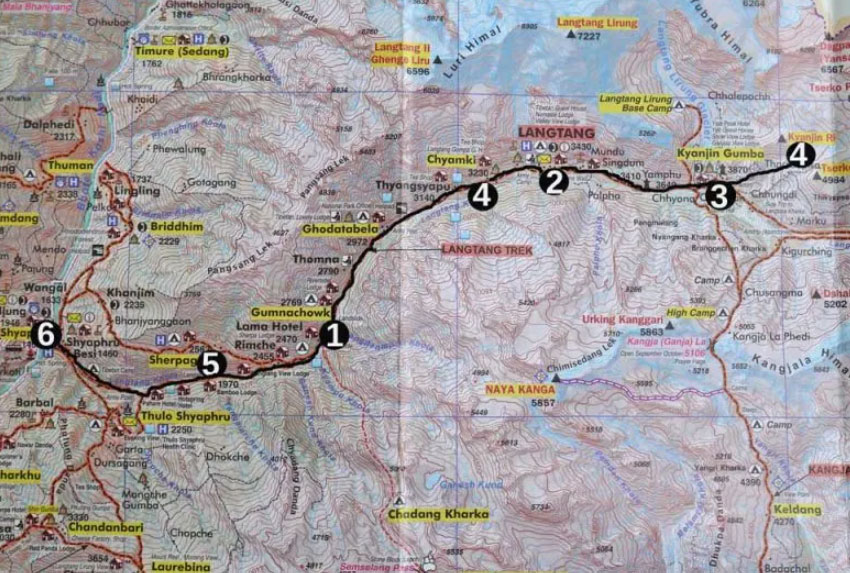
Langtang trek itinerary – 6 days
Day 1. Syabrubesi (1492m) – Lama Hotel (2447m), 15,7 km/9,7 mi
- Route: Tiwasi – Pairo – Bamboo – Rimche – Lama Hotel
- Distance – 15,7 km/9,7 mi
- Time – 5 hours*
- Ascent – 1247m
- Descent – 278m

The Langtang trek starts at the end of the road in Syabrubesi the village near the river. The first sign is just beside the small suspension bridge. Once you cross the bridge you have to take a left turn, you will find another arrow drawn towards Langtang. From there it is not too complicated as the trail is actually one and it starts by the river and gradually goes uphill.
About 5 km into the walk, there was one section where the suspension bridge seemed quite dilapidated and weak, and it was unclear where to cross the river. But still the bridge was strong enough to cross from one side to the other side.
In essence, it was a beautiful day of hiking but not without some form of hardship and struggle. The brightness was beautiful throughout the entire shooting, featuring the river and some great woods, and multiple suspension bridges. More to that, there is also numerous places that can offer you tea or an early lunch on the way.
Highlights:
- Stunning scenery, including the river, waterfalls, large boulders along the path, small villages, and a beautiful forest.
Challenges:
- Several ascents and descents early in the day.
- A particularly steep and long climb from Bamboo to Lama Hotel.
Stops on the route
| Name | Tiwasi | Pairo | Bamboo | Rimche | Lama Hotel |
| Distance | 3,4km | 6,6km | 10km | 14,5km | 15,7km |
| Elevation | 1555m | 1680m | 1970m | 2450m | 2447m |
| Guesthouse | + | + | + | + | + |
| Restaurant | + | + | + | + | + |
| Shop | + | + | + | + | + |
| Electricity | + | + | + | + | |
| Hot shower | + | + | + | + | + |
| Wi-fi | + | + | + | + |
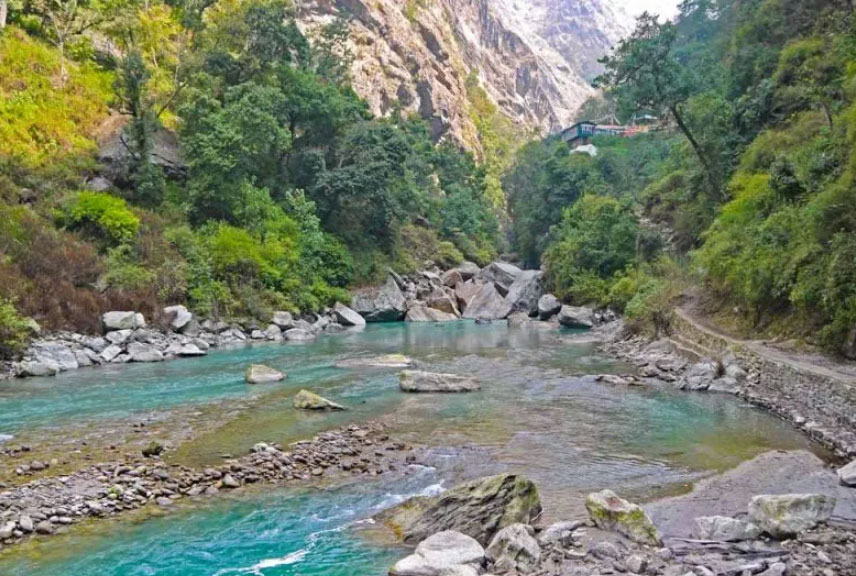
Day 2. Lama Hotel (2447m) – Langtang Village (3500m), 14 km/8,6 mi
- Route: Riverside Lodge – Ghodatabela – Thyangsyapu – Chyamki – Langtang
- Distance – 14 km/8,6 mi
- Time – 4 hours
- Ascent – 1075m
- Descent – 155m

It is another beautiful day of hiking and there are several places on this trail to brew tea or to take lunch. Though the climb was not as long as the previous day, the hike was a little tough owing to the altitude.
Although there are no signs or symbols that indicate the direction or the continuation of the trail, the path is very easy to follow since it is only a single trail within close proximity to the river. Hike in the forest covers the first part of the day while the second half of the day offers an opportunity to traverse through a valley where you get to enjoy the topographic features of the mountain range.
Finally, often by mid of the day there is a checkpoint for permits at Ghodatabela.
Highlights:
- Incredible views of the mountain range and snow-capped peaks
- Beautiful forested sections
Challenges:
- A long ascent in the latter half of the day
- A steep, though relatively short, climb just before reaching Langtang Village
Stops on the route
| Name | Riverside lodge | Ghodatabela | Thyangsyapu | Chyamki | Langtang |
| Distance | 3km | 7km | 9km | 12,5km | 14km |
| Elevation | 2711m | 2976m | 3121m | 3310m | 3500m |
| Guesthouse | + | + | + | + | + |
| Restaurant | + | + | + | + | + |
| Shop | + | + | + | + | + |
| Electricity | + | + | + | + | + |
| Hot shower | + | + | + | ||
| Wi-fi | + | + | + |
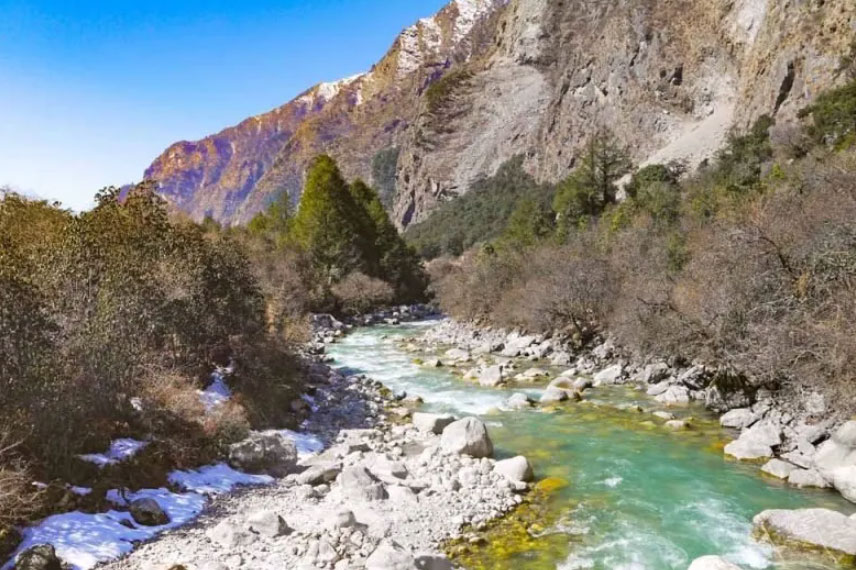
Day 3. Langtang Village (3500m) – Kyanjin Gompa (3800m), 6,7 km/4,1 mi
- Route: Mundu – Singdum – Yamphu – Kyanjin Gompa
- Distance – 6,7 km/4,1 mi
- Time – 2 hours
- Ascent – 418m
- Descent – 42m

This is again a fairly short and manageable day of trekking and which had the best views of the trek up to this time. There is snow on mountains; a crystal clear river, big loose rocks and specially formed rocks, stupas, many yaks and excellent view points on the trail.
Highlights:
- Breathtaking scenery
- Two beautiful stupas located about 2 km before the town
- Spectacular views of the valley from Kyanjin Gompa
Challenges:
- A few steep but brief ascents
- The rising altitude makes you tire more quickly and feel short of breath
Stops on the route
| Name | Mundu | Singdum | Yamphu | Kyanjin Gompa |
| Distance | 1km | 2km | 5km | 6,7km |
| Elevation | 3540m | 3555m | 3716m | 3800m |
| Guesthouse | + | + | + | |
| Restaurant | + | + | + | + |
| Shop | + | + | + | + |
| Electricity | + | + | + | |
| Hot shower | + | + | + | |
| Wi-fi | + | + | + |
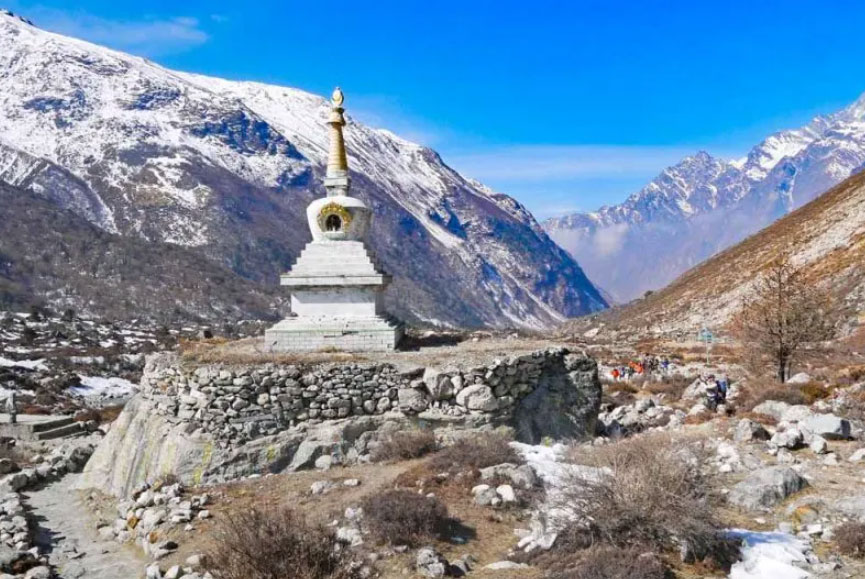
Day 4. Kyanjin Gompa (3800m) – Kyanjin Ri (4600m) – Kyanjin Gompa (3800m) – Chyamki (3380m), 13,5 km/8,3 mi
- Route: Kyanjin Gompa – Kyanjin Ri – Kyanjin Gompa – Yamphu – Singdum – Mundo – Langtang – Chyamki
- Distance – 13,5 km/8,3 mi
- Time – 5h.30min.
- Ascent – 804m
- Descent – 1237m
Kyanjin Gompa (3800m) – Kyanjin Ri peak (4600m) – Kyanjin Gompa (3800m), 5 km/3,1 mi
- Distance – 5 km/3,1 mi
- Time – 3 hours
- Ascent – 696m
- Descent – 696m

Getting to the top of the mountain is not an easy task. There is nothing much in terms of a sign at the beginning of the trail and the trail is not very obvious to follow. At the first junction with the path, turn right and follow the path to the top, it is quite distinct.
The scenery you get to see at the top of the summit is rather breathtaking. In clear weather one can have a panoramic view of the valley, several peaks with snow on them and far off mountain ranges. It is advised that should one plan to make the climb it is better to do it in the morning when it is normally sunny. From the mid of the day, there is a tendency of cloud formation that limits the amazing views that one gets to see. If you do not wish to go right up to the top you may find Kyanjin Ri – lower a bit more manageable as it is halfway up.
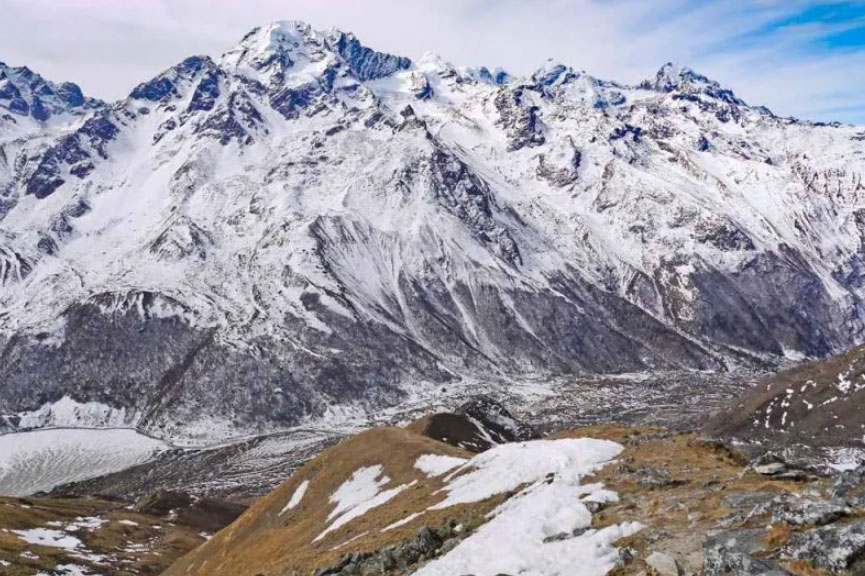
Kyanjin Gompa (3800m) – Chyamki (3380m), 8,5 km/5,2 mi
- Distance – 8,5 km/5,2 mi
- Time – 2h 30min
- Ascent – 108m
- Descent – 541m
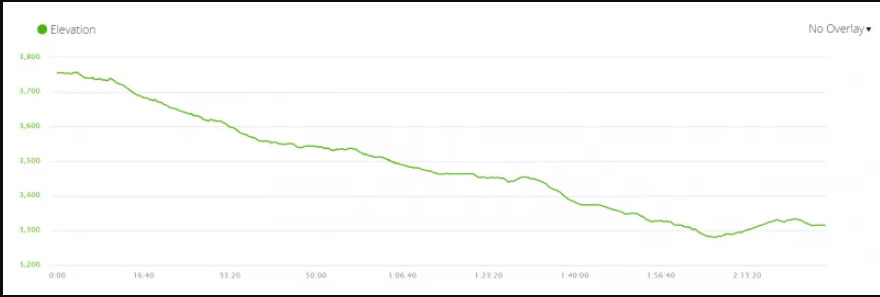
This means that the Langtang trek is a return trek whereby one has to walk back the same trail he or she had taken. In order to avoid repetition, you can decide to sleep in different villages as you make your way back. But rather than stopping at Langtang one can proceed to the next village known as Chyamki and spend a night there.
Stops on the route
| Name | Yamphu | Singdum | Mundu | Langtang | Chyamki |
| Distance | 1,7km | 4,7km | 5,7km | 6,5km | 8,5km |
| Elevation | 3716m | 3555m | 3540m | 3500m | 3310m |
| Guesthouse | + | + | + | + | |
| Restaurant | + | + | + | + | + |
| Shop | + | + | + | + | + |
| Electricity | + | + | + | + | |
| Hot shower | + | + | + | + | |
| Wi-fi | + | + | + | + |
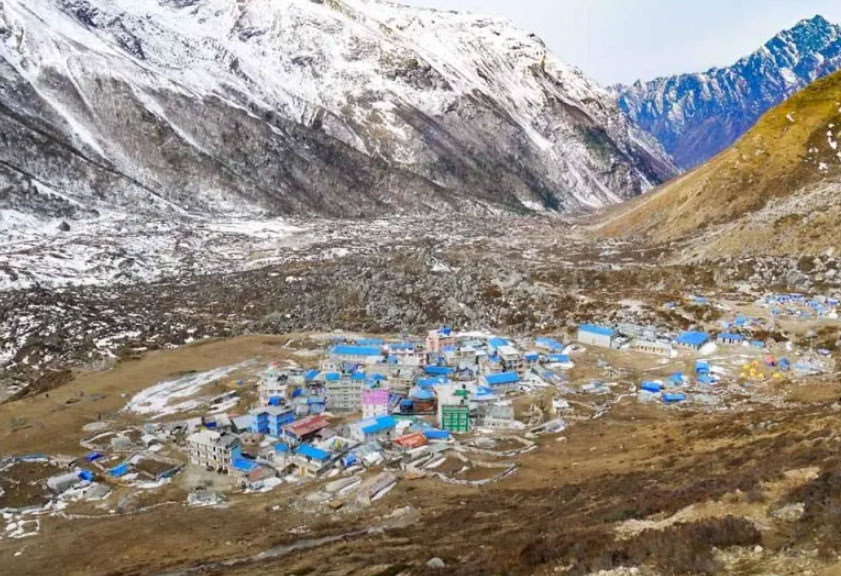
Day 5. Chyamki (3380m) – Bamboo (1970m), 18 km/11 mi
- Route: Thyangsyapu – Ghodatabela – Lama Hotel – Rimche – Bamboo
- Distance – 18 km/11 mi
- Time – 4h30min.
- Ascent – 198m
- Descent – 1574m
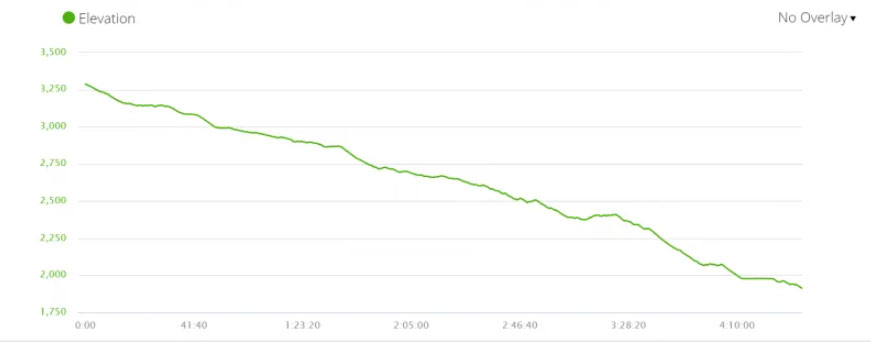
The last two days of the trek could be sorted into one where it means hiking up to bamboo, feeling like you can go further to Syabrubesi so you secure a bus to Kathmandu the next day. It can be a tiring day of hike, and will take you about 6 hours with a lot of walking downhill where you will be losing 2254 meters in the process. There’s no need to overdo it; if the leg is getting sore or the knees begin to ache, it will be best to sit down at Bamboo and then carry on the next day.
While descending, many monkeys can be met in the forest, and the walk may be, in general, easy.
Stops on the route
| Name | Thyangsyapu | Ghodatabela | Lama Hotel | Rimche | Bamboo |
| Distance | 3,5km | 5,5km | 12,5km | 13,5km | 18km |
| Elevation | 3121m | 2976m | 2447m | 2450m | 1970m |
| Guesthouse | + | + | + | + | + |
| Restaurant | + | + | + | + | + |
| Shop | + | + | + | + | + |
| Electricity | + | + | + | + | |
| Hot shower | + | + | + | + | |
| Wi-fi | + | + | + |
There are a couple of guesthouses and restaurants in Bamboo, so it won’t be a problem to find a place.
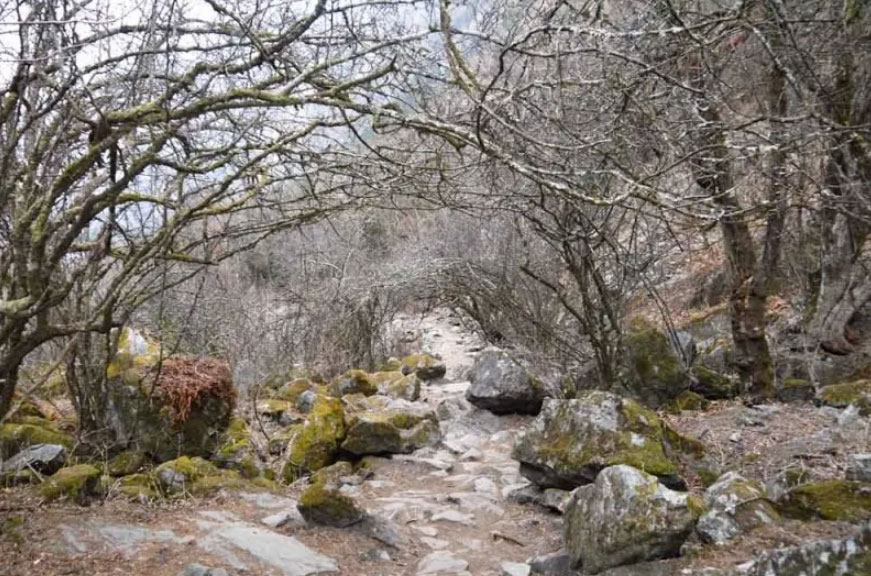
Day 6. Bamboo (1970m) – Syabrubesi (1492m), 9,5 km/5,9 mi
- Route: Pairo – Tiwasi – Syabrubesi
- Distance – 9,5 km/5,9 mi
- Time – 2h20min.
- Ascent – 183m
- Descent – 680m
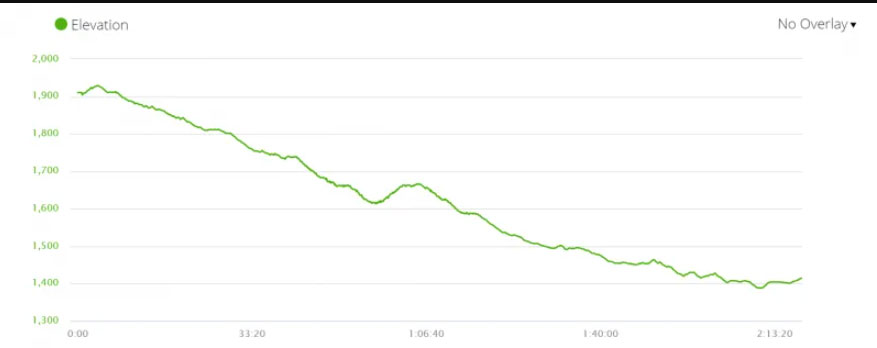
If you walk it on a separate day it’s a very short and easy walk with beautiful scenery.
Stops on the route
| Name | Pairo | Tiwasi | Syabrubesi |
| Distance | 3,5km | 6,5km | 9,5km |
| Elevation | 1680m | 1555m | 1492m |
| Guesthouse | + | + | + |
| Restaurant | + | + | + |
| Shop | + | + | + |
| Electricity | + | + | + |
| Hot shower | + | + | + |
| Wi-fi | + | + | + |
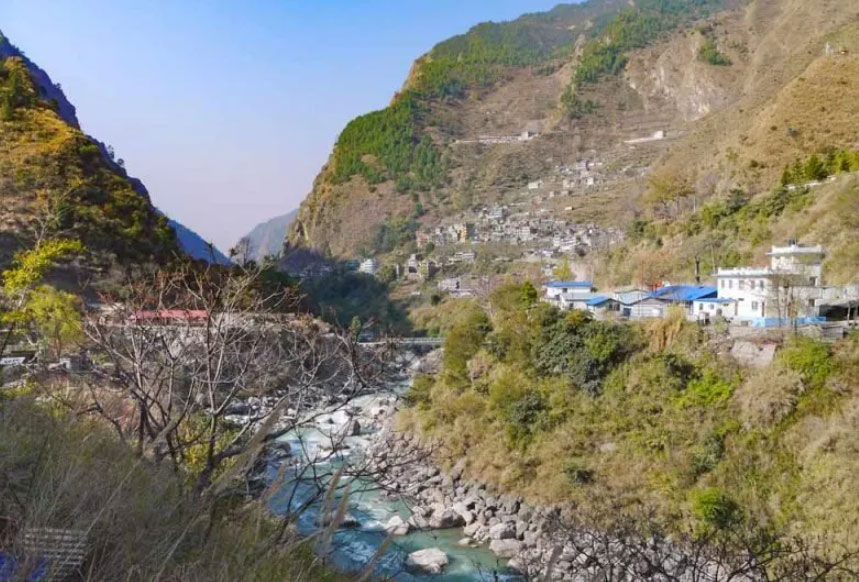
Getting back to Kathmandu
Now, let me share with you the different ways on how to go back to Kathmandu from Syabrubesi by bus. The buses are picked up from Syabrubesi in the morning normally between six and eight in the morning and the duration of the journey ranges between seven and nine hours depending on the road network. The road is bumpy and to some extent gravelly and there are several halts on way for meals and breaks. On this route, the cost of the one way ticket costs about NPR 800 (or approximately 6 US dollars) per person. Before commencing the journey, one ought to book the ticket a day in advance especially during the high demand of trekking activities. When you are ready for your journey back to Kathmandu, expect it to be a long and a little rough one.
What to pack for the Langtang trek?
If you plan to carry your own backpack, it’s crucial to pack light and bring only the essentials. Here is the essential packing list for the Langtang trek, which is quite similar to what you should pack for the Everest Base Camp trek.
Gear
- Sleeping bag – most places provide blankets, but recommend you to take your own sleeping bag.
- Waterproof pouch for documents, money, phone, permits, etc.
- LifeStraw – it’ll save you quite a lot of money.
- Small combination lock – useful for locking your room in a guest house.
- Headlamp
- Hiking poles – Useful but not recommended.
- Backpack – a 40L backpack will be enough.
Clothes
For the Langtang Trek, you’ll need to pack clothing that can handle a range of temperatures and conditions, as the weather can vary greatly from warm during the day to very cold at night. Here’s a list of essential clothing items to bring:
1. Base Layers:
- Moisture-wicking shirts (short-sleeve and long-sleeve) to keep you dry and comfortable.
- Thermal underwear or base layer tops and bottoms to retain body heat during colder nights and mornings.
2. Mid Layers:
- Fleece jacket or lightweight sweater for warmth during the day and cooler evenings.
- Insulated jacket (down or synthetic) for extra warmth at higher altitudes and during colder nights.
3. Outer Layers:
- Waterproof and windproof jacket to protect against rain, wind, and unexpected weather changes.
- Waterproof pants for rainy days or when hiking through wet conditions.
4. Trekking Pants:
- Lightweight, quick-drying pants for day hikes.
- Warm, thermal trekking pants for colder days and evenings.
5. Footwear:
- Sturdy trekking boots with good ankle support and grip.
- Comfortable trekking socks (wool or synthetic) to keep your feet warm and dry.
6. Accessories:
- Hat or cap for sun protection.
- Warm hat or beanie for colder conditions at higher altitudes.
- Gloves (thermal or fleece-lined) for warmth during colder parts of the trek.
- Neck gaiter or scarf to protect against wind and cold.
7. Other Essentials:
- Sunglasses with UV protection to protect your eyes from intense sunlight, especially in snowy conditions.
- Gaiters to keep snow, mud, and debris out of your boots, particularly useful during the monsoon or snow season.
Make sure to layer your clothing to adjust to different temperatures throughout the day and night, and pack light but effectively to ensure comfort and safety on the trek.
Electronics
When packing electronics for the Langtang Trek, it’s essential to focus on items that will help you navigate the trail, capture memories, and stay safe while keeping your load light. Here is a list of essential electronics you should consider bringing:
1. Smartphone
- Uses: Navigation, communication, photography, emergency contact, and entertainment.
- Tip: Download offline maps and necessary apps before the trek since the signal can be spotty.
2. Camera and Accessories
- Uses: Capturing high-quality photos and videos of the stunning landscapes.
- Tip: Consider a lightweight camera or use your smartphone if it has a good camera to minimize weight.
3. Portable Charger/Power Bank
- Uses: Keeping your electronics charged, especially in remote areas where electricity is limited.
- Tip: A high-capacity power bank (10,000 mAh or more) is recommended to charge multiple devices over several days.
4. Headlamp with Extra Batteries
- Uses: Navigating in the dark, early morning starts, or nighttime use around camp.
- Tip: Choose a headlamp with a red light mode to preserve night vision and save battery life.
5. Solar Charger (Optional)
- Uses: Recharging your devices using solar energy, useful in areas with limited electricity.
- Tip: This is optional but can be helpful if you have multiple devices that need charging.
6. Extra Batteries and Memory Cards
- Uses: For your camera, headlamp, or other battery-powered devices.
- Tip: Bring extra memory cards to avoid running out of storage space for photos and videos.
7. Plug Adapter and Charger
- Uses: Charging your devices in guesthouses and tea houses.
- Tip: Nepal uses Type C, D, and M plug types, so make sure to bring a compatible adapter.
8. E-Reader or Tablet (Optional)
- Uses: For reading or entertainment during downtime.
- Tip: Load it with books, maps, or guides before the trek to avoid carrying physical books.
9. GPS Device or Smartwatch (Optional)
- Uses: Tracking your route, altitude, and steps.
- Tip: A smartwatch with GPS can be handy for tracking daily stats and checking the time without pulling out your phone.
10. Noise-Canceling Earbuds or Headphones (Optional)
- Uses: Listening to music, podcasts, or audiobooks during the trek or while resting.
- Tip: Noise-canceling features can help block out ambient noise in busy guesthouses or noisy environments.
Remember to conserve battery power as much as possible by turning off non-essential functions and putting devices in airplane mode. Keeping your electronics dry and protected from cold temperatures with waterproof and insulated bags is also essential.
Toiletries & miscellaneous
- Lip balm with SPF
- Outdoor soap sheets
- Hand sanitizer
- Sunscreen
- First Aid kit
- Deodorant
- Humid tissues
- Toothbrush
- Toothpaste
- Toilet paper
Recommended books and guidebooks
- Yak Girl: Growing Up in the Remote Dolpo Region of Nepal by Dorje Dolma.
- The Snow Leopard by Pieter Matthiessen.
- Into Thin Air: A Personal Account of the Mt. Everest Disaster by Jon Krakauer.
- A Trekking Guide to Langtang (Himalayan Travel Guides). Second edition, 2018.
- Lonely Planet Nepal (Travel Guide), 2023.
- Little Princes: One Man’s Promise to Bring Home the Lost Children of Nepal by Conor Grennan.
Questions or Comments?
Got any questions or comments? We would love to help! All questions and comments will be answered by us personally.
